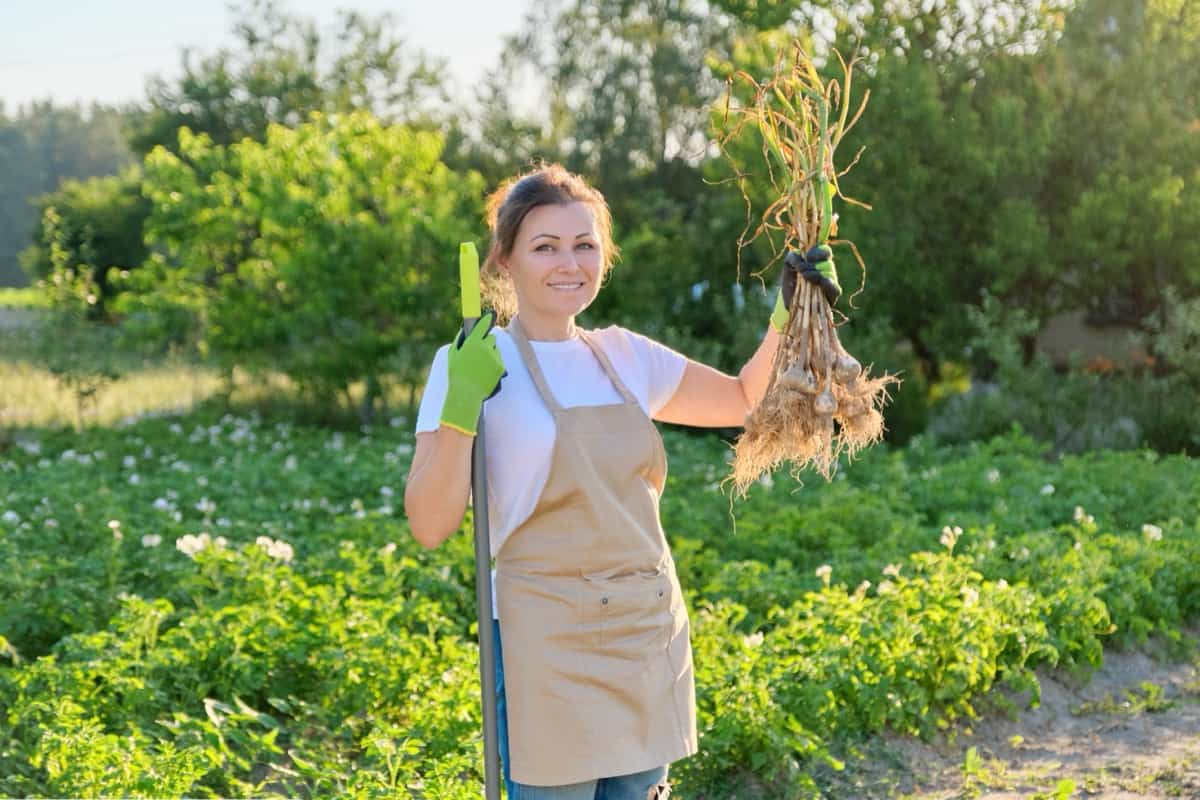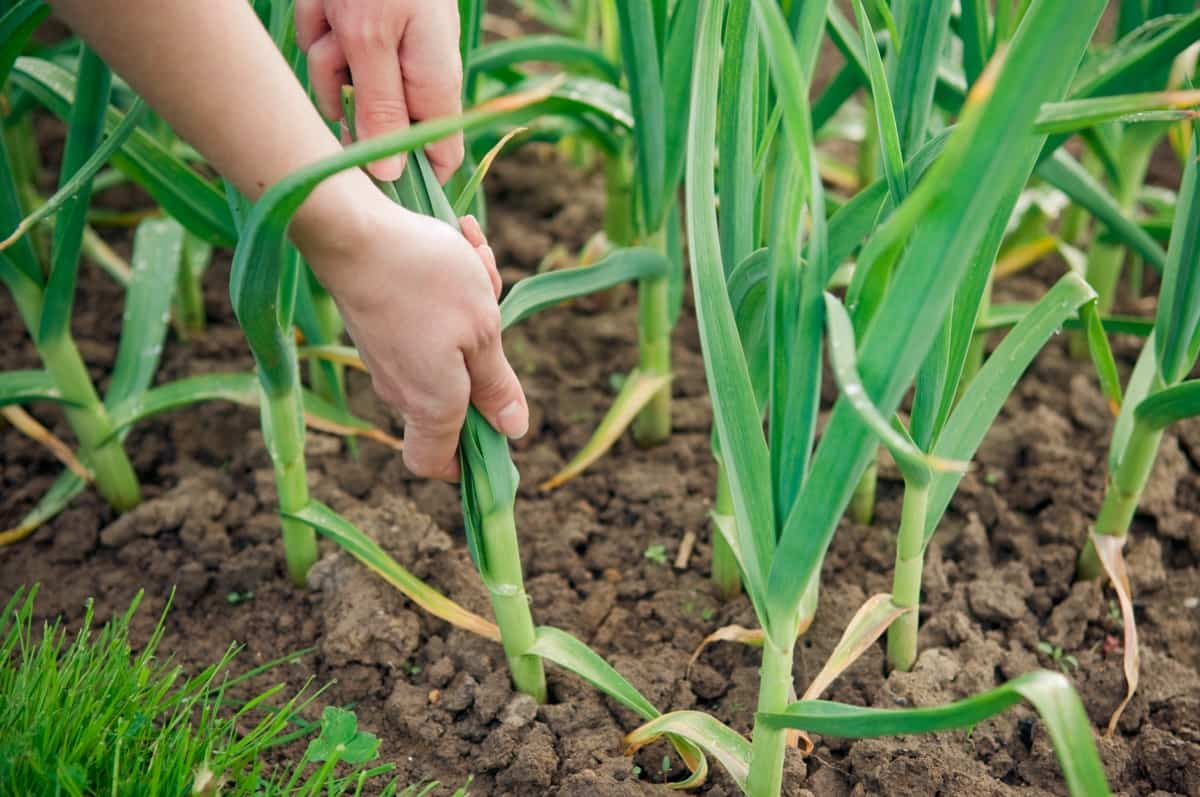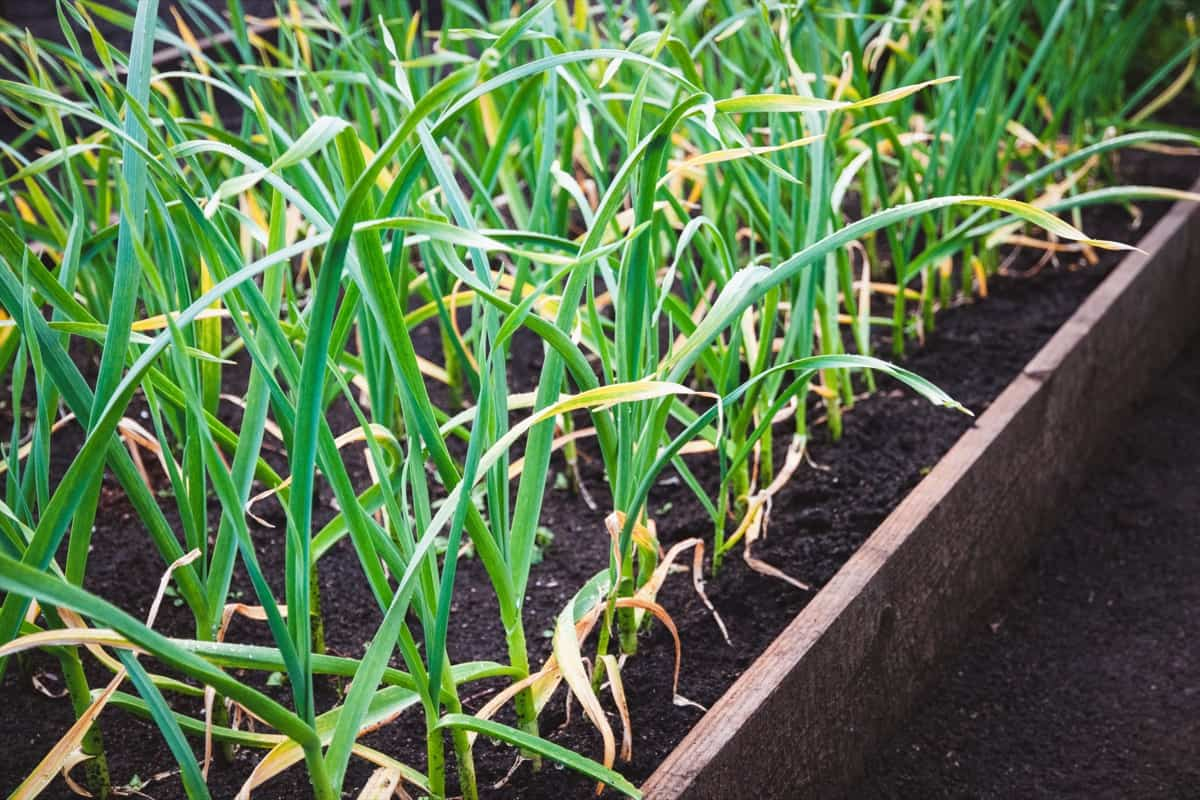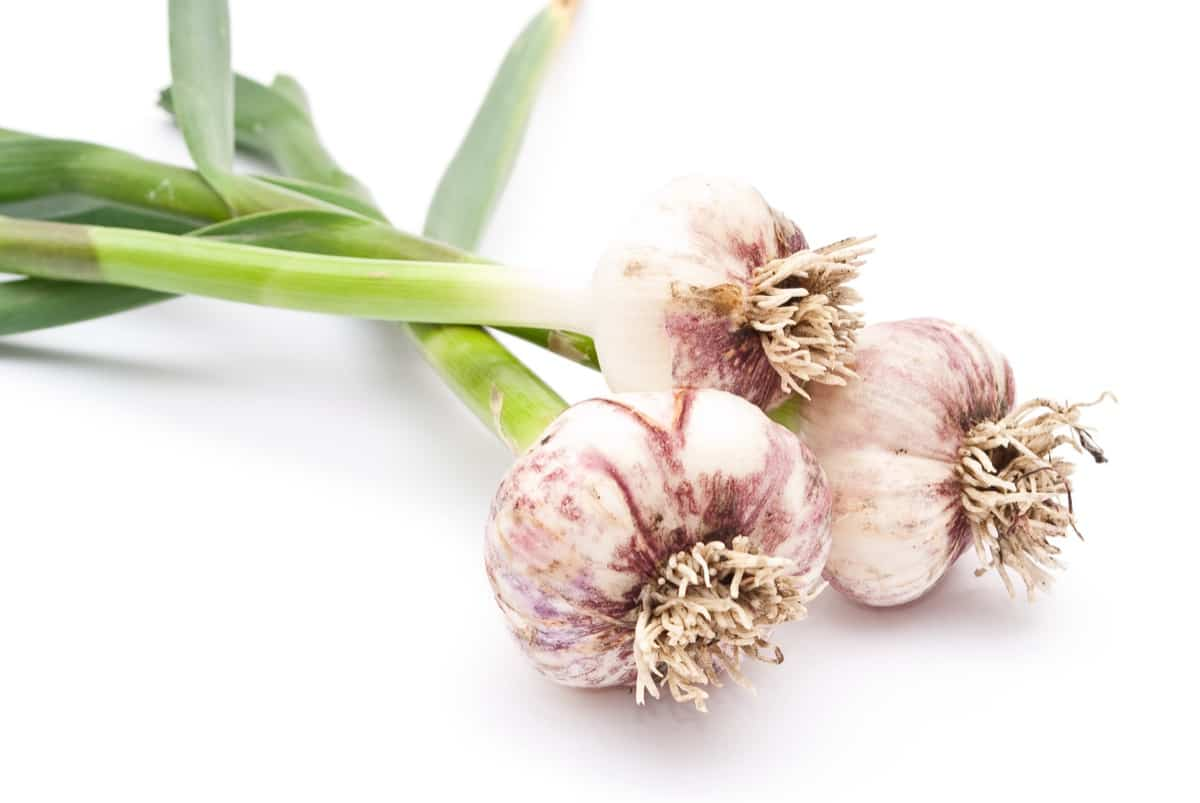Pests can have a detrimental effect on Garlic plants, causing damage to the leaves and bulbs. These pesky intruders not only weaken the health of the plant but also reduce its overall yield. Growers need to take proactive measures to control Garlic pests naturally. The most important Garlic pest is bulb mites. These tiny insects feed on Garlic bulbs, causing stunted growth and deformed cloves.

Nematodes are another common pest that affects Garlic. These worms attack the roots of Garlic plants, leading to poor nutrient absorption and an overall decline in plant health. Onion maggots also pose a threat as they lay eggs near or inside onion family crops like Garlic, resulting in maggot-infested bulbs. Thrips are small flying insects that feast on young foliage and flower buds of Garlic plants. Understanding the importance of controlling Garlic pests naturally is crucial for maintaining a healthy garden ecosystem.
How to Control Garlic Pests Naturally
Soil Management Strategies for Reducing Garlic Pest Populations
By implementing effective strategies, you can create an unfavorable environment for pests to thrive and minimize their impact on your Garlic crop. The main strategy is practicing crop rotation. Avoid planting Garlic in the same location year after year, as this can result in a buildup of pests in the soil. Instead, rotate your crops by planting different vegetables or cover crops in that area.
Creating a Pest-Resistant Environment for Garlics: Tips and Techniques
- Start with healthy soil: Healthy soil conditions promote strong, disease-resistant plants. Ensure proper drainage, amend with organic matter, and maintain balanced pH levels.
- Rotate crops: Pests often target specific plant families or varieties. By practicing crop rotation, you disrupt their life cycle and make it harder for them to establish themselves in your garden.
- Remove weeds regularly: Weeds provide shelter and food sources for pests. Keep your garden weed-free by pulling them out regularly or using mulch as a natural weed suppressant.
Companion Planting for Natural Pest Control in Garlic Gardens
Marigolds are often used as companions for Garlic because they repel nematodes, which can damage the roots of Garlic plants. Their strong scent acts as a natural pest deterrent for these microscopic worms. Another great companion plant for Garlic is chives. These onion relatives provide a delicious flavor addition to your meals and help repel harmful insects such as aphids, thrips, and onion maggots. Mint is another herb that can be planted alongside Garlic to control pests naturally. Its powerful aroma confuses and repels many insect pests like ants, aphids, and flea beetles.
In case you missed it: How to Control Iris Pests Naturally: How to Get Rid of Them with Natural and Organic Treatment

Introducing Beneficial Insects to Combat Garlic Pests
Ladybugs are one of the well-known beneficial insects. By releasing ladybugs into the garden, you can help prevent infestations before they even start. Another valuable insect ally is the lacewing. These delicate creatures have a voracious appetite for aphids, mites, and small caterpillars. By attracting lacewings or purchasing their eggs to release in your garden, you can provide a natural defense against these pesky pests. Parasitic wasps are also incredibly helpful to get rid of Garlic pests.
Homemade Organic Sprays for Controlling Garlic Pests
A mixture of Garlic and water – Blend several cloves of Garlic with water until you have a concentrated solution. Then, dilute this mixture in a spray bottle and apply it directly onto the leaves of your Garlic plants. The strong smell of Garlic acts as a homemade treatment for Garlic pests.
Neem oil – Neem oil contains compounds that disrupt the insect’s life cycle, preventing them from reproducing and causing damage to your Garlic plants. Mix neem oil with water according to package instructions and spray it onto both sides of the leaves.
Soap-based sprays – Consider using soap-based sprays to control common pests on your Garlic plants. Mix liquid dish soap or insecticidal soap with water in a ratio recommended on the product label. Spray this solution onto affected areas to suffocate soft-bodied pests such as thrips or spider mites.
Using Physical Barriers to Protect Garlic from Pests
The main method is to use row covers made of lightweight fabric or netting. Secure the cover over your Garlic bed with stakes or clips. Another way is to create a barrier using mulch or straw. This helps retain soil moisture and acts as a physical barrier, making it tough for pests to reach the Garlic bulbs underground. Installing fencing around your Garlic garden can be highly effective for larger pests like rabbits or deer. Choose a sturdy material that will prevent these animals from gaining access.
Implementing Cultural Practices to Prevent Pest Infestations in Garlics
The main method is to use row covers made of lightweight fabric or netting. Secure the cover over your Garlic bed with stakes or clips. Additionally, you can use floating row covers supported by wire hoops to create a protective tunnel over individual plants or rows of Garlic. This method provides excellent protection against flying insects while allowing sunlight to reach the plants.
In case you missed it: How to Control Kale Pests Naturally: How to Get Rid of Them with Natural and Organic Treatment

Natural Predators of Garlic Pests: Encouraging Wildlife in the Garden
Ladybugs, lacewings, and parasitic wasps are just a few examples of beneficial insects that feed on aphids, thrips, and other small pests that may infest your Garlic plants. To attract these helpful creatures to your garden, consider planting flowers such as daisies or marigolds.
These vibrant blooms not only add beauty but also provide nectar and pollen for beneficial insects to feast on. Birds can also be valuable allies in controlling Garlic pests. Sparrows, finches, and wrens are known for their appetite for insects. Provide birdhouses or install bird feeders to entice them to visit your garden.
Monitoring and Early Detection: Key Steps in Managing Garlic Pests Naturally
By regularly inspecting your plants, you can identify Garlic pests at their earliest stages, allowing for prompt intervention and prevention of widespread infestations. The effective technique is visual inspection. Take the time to carefully examine your Garlic plants, looking for any signs of damage or the presence of pests. Watch for chewed leaves, discolored bulbs, or wilting foliage, as these could be indicators of pest activity. Another method is using sticky traps or pheromone traps. Place them strategically around your garden to get a comprehensive view of pest activity.
Frequently Asked Questions (FAQ) about Garlic Pests
What are the Most Common Pests in Garlic?
The most common pests that affect Garlic include bulb mites, leafminers, nematodes, onion maggots, and thrips. These pests can cause damage to the Garlic plants if not controlled.
Will Planting Other Crops Near My Garlic Help Deter Pests?
Yes. Companion planting is a great method to deter pests from your Garlic garden naturally. Some beneficial companion plants for deterring pests include marigolds (repel nematodes), chives (repel aphids), and mint (repels ants).
How Often Should I Monitor My Garlic Plants for Pest Activity?
Regular monitoring is important when it comes to managing Garlic pests naturally. Check your plants at least once a week for any signs of pest damage or infestation.
Are There Any Natural Predators of These Pesky Bugs?
Yes. Encouraging wildlife in your garden can be an effective way of controlling pest populations naturally. Birds like sparrows and wrens feed on insects, while snakes prey on rodents that may carry insect larvae.
Can Homemade Sprays Effectively Control Garlic Pests?
Yes, homemade sprays made from ingredients like neem oil or soap solutions can be effective in controlling certain types of Garlic pests when applied properly.
What Are Some Natural Predators of Common Garlic Pests?
Predatory insects like ladybugs, lacewings, and parasitic wasps feed on many common garden insect pests, including those that affect Garlic crops.
How Do I Identify Garlic Pests?
It is important to be able to identify Garlic pests to control them effectively. Look out for signs such as wilting leaves, yellowing or browning foliage, stunted growth, holes in leaves or bulbs, and the presence of small insects on the plants.
In case you missed it: How to Control Carrot Pests Naturally: How to Get Rid of Them with Natural and Organic Treatment

Control Garlic Pests Naturally
| Pests | Symptoms | Identification | Control |
| Bulb Mites | Stunted growth, discolored bulbs | Tiny white mites on bulbs or in soil | Remove infested plants, use reflective mulch around plants |
| Leaf miners | Irregular tunnels or blotches on leaves | Larvae inside the leaf tissue | Handpick affected leaves, introduce beneficial insects |
| Nematodes | Stunted growth, yellowing foliage | Knots or galls on roots | Rotate crops regularly |
| Onion Maggots | Wilting plants with yellowing leaves | Small white maggots near the base of the plant | Cover young plants with row covers, apply beneficial nematodes |
| Thrips | Brown spots and streaks | Tiny insects with fringed wings | Spray neem oil solution, discard heavily infested plants |
Conclusion
Pests in Garlic can result in stunted growth, yellowing leaves, and even premature death of the plant. Common pests in Garlic plants include bulb mites, leafminers, nematodes, onion maggots, and thrips. Controlling Garlic pests naturally promotes sustainability in gardening practices. Organic remedies such as companion planting or introducing beneficial insects work towards creating a balanced ecosystem where plants thrive without relying solely on chemical interventions.
- Beneficial Insects in Pest Management
- Natural Solutions for Pest Control in Flower Gardens
- Types of Fungicides Used in Agriculture
- Common Issues in the Fruit Development Stage of Pomegranate Farming
- Fruit Development Issues in Papaya: Easy Solutions and Treatment
- Soil-Borne Diseases and How to Protect Your Plants
- Practices to Prevent Disease Spread in the Garden
- From Wilted to Thriving: How to Treat Root Rot Naturally in Houseplants
- Natural Remedies to Cure Brown Spots on Fig Tree Leaves